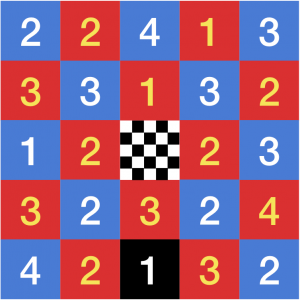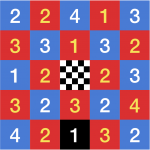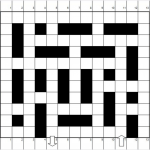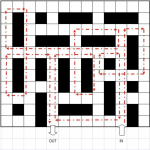Maths Maze
Ages: 6-14
Materials: maths maze of your choice
Time: 1-2 hours
Complexity: low entry, high ceiling

How to play
Start at the black square with the 1 on it in the centre of the bottom row. The objective is to find your way to the central square by jumping the number of squares indicated by the number on the square. Players can jump forward, sideways, or backwards, but never diagonally
It is not as easy as it looks!
(c) 1999, Adrian Fisher

Tip: You can also make No Right Turn mazes.


Tip: These mazes could be made in chalk in the playground or in many other handy ways. Use whatever materials are abundant and inexpensive!
How to design a logic maze

Choose an entry point to the maze which must be on the edge of the maze. Then choose a final destination square and draw a main path, or solution route, from this square to the entry point in the maze. For example, when creating your own Jumping Maze you would need to work backwards from the centre square like this:
The solution route created is 1, 1, 3, 3, 2, 2, X
To complete this maze simply put other numbers into the blank squares on the grid. The level of complexity of the final maze depends on the position of the numbers on the grid.
Most of the mazes that your students create will have a number of different solution routes to the final destination square. To create a unique solution path (only one way to the final destination square), none of the other numbers placed on the grid should allow you to jump onto the solution route. This offers a difficult yet very motivational challenge to students.
Make sure when creating a maze that the path is not too short or your maze will be solved very quickly. Alternatively dont make the path too long, as you wont be able to have many choices or dead-ends, and then the maze becomes less of a challenge. Think carefully about the design and the way the maze looks; this will be important when it comes to getting others interested in playing your maze.
Here are some logic mazes you can show students before they start to design their own mazes. To motivate students it is a good idea to chalk mazes on the playground or to mark them out with tape in the school hall.

